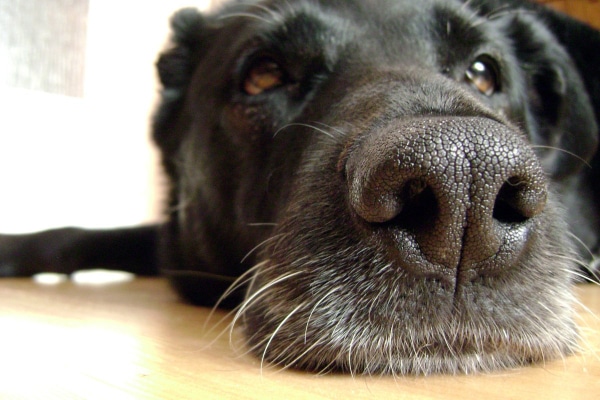What diagnostics might the vet run?
In addition to gathering your dog’s history (including travel history, symptoms, etc.) and doing a complete physical exam, your vet may suggest several other tests. Often, he or she will start with some blood tests. This may include a complete blood count (CBC) and blood chemistry profile. These tests are a useful way to evaluate red blood cell and platelet numbers, measure proteins and globulins (for hyperviscosity syndrome), and look at liver and kidney enzyme levels. Urine testing is also a part of this minimum database of information.
Additionally, the vet may decide to run tick titers to look for the presence of tick-borne illnesses or coagulation tests to check for blood clotting issues or DIC. The vet might also suggest basic imaging like X-rays and ultrasound to look for evidence of cancer, fungal infections, and internal bleeding.
If the vet suspects a nasal tumor, he or she will probably recommend advanced imaging such as a CT and MRI. These modalities are better at detecting nasal tumors than X-rays alone. The vet also may suggest a thorough oral exam under general anesthesia (including dental X-rays) if he or she thinks dental disease may be contributing to the nose bleeds.
Some dogs will end up needing a rhinoscopy to figure out why they are having nose bleeds. Rhinoscopy is a procedure where the veterinarian inserts a special scope into the nasal cavity to look for signs of trauma, tumors, fungal infections, or foreign bodies. In some cases, the vet may decide to take biopsy samples during the rhinoscopy. However, you should be aware that local inflammation and the tendency for nasal tissue to bleed easily can make it hard to get good samples.

#6: Dental disease
In the average dog skull, there is a thin plate of bone that separates the nasal cavity from the oral cavity below. When periodontal disease (i.e. dental disease in dogs) is present, it can lead to significant bone infection or even bone loss beneath the surface of the gums.
Thus, dental disease affecting the teeth in the upper portions of the mouth can lead to problems within the nasal cavity. One such example is an oronasal fistula, a tiny open communication between the nasal cavity and the oral cavity. This communication can result in infection and nose bleeds.
Causes of Nose Bleed in Dogs
There can be numerous probable causes for epistaxis, which must rule out to ensure the health of your dog: